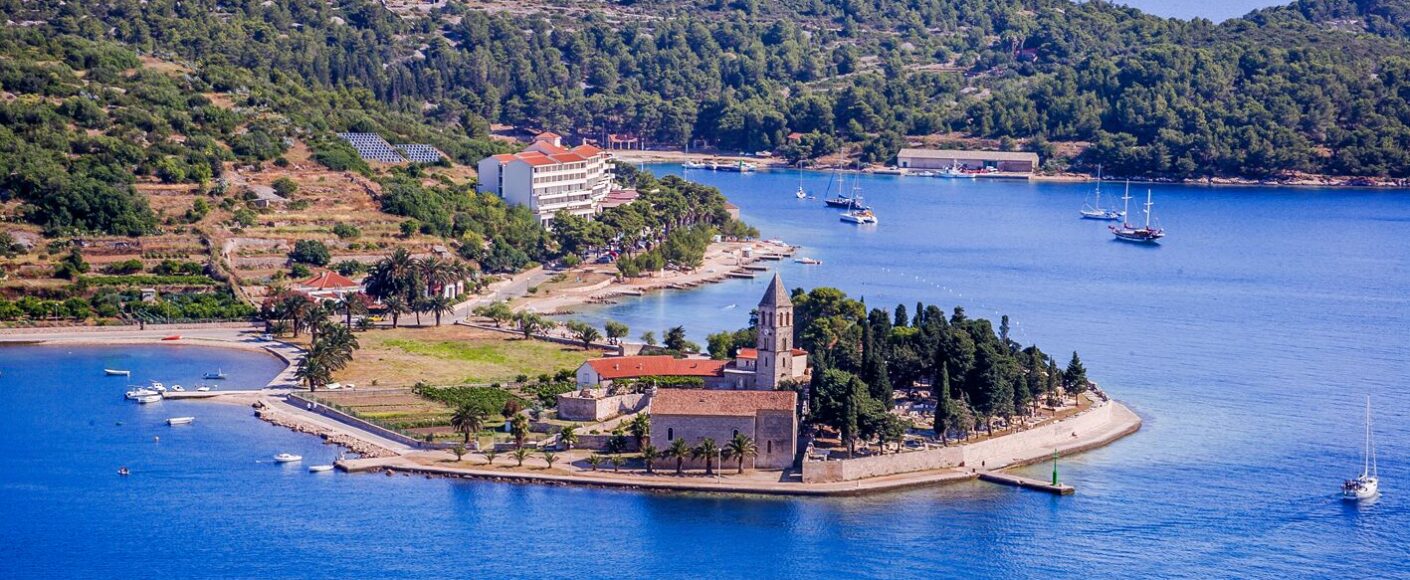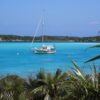Vis

The islands of Vis and Sušac – They form the link between the two islands of the god of the wind – the Aeolian Islands – where the winds collide, the problem of navigation.
Vis (Italian Lissa and ancient Greek Ίσσα, Issa) is an outlying Croatian island in the Adriatic Sea. It is 45 km from the mainland.
The surface of the island is 89.72 km2, and the total length of the coast of Vis is 84.9 km. Around the island of Vis there are numerous smaller islands, islets and shoals (Biševo, Veliki and Mali Budikovac, Brusnik, Jabuka, Ravnik, Svetac and others).
Natural beauties worth seeing are the Blue Cave on the nearby island of Biševo, the Green Cave on Ravnik and the Queen’s Cave on Vis, and among the historical sights, Tit’s Cave, a restored monument to sailors killed in the Battle of Vis, should be mentioned.
There are also unique bays on Vis, such as Stiniva.
The Viška cruiser regatta, which has been held since 1945, is one of the oldest regattas in Croatia and a race of FALKUŠA-type boats.
The larger towns on the island are Vis (1,776 a.s.l.) and Komiža (1,523 a.s.l.).
Vis is the only part of the former Yugoslavia that was never occupied by the German army. At that time, an allied military airport was located on it (today under the vineyards). Tito took refuge on Vis in June 1944 after the German landing on Drvar.
Water area Vis – Hvara
The Battle of Vis was a naval conflict in the Vis channel between the French and British navies that took place on March 13, 1811.
The Austrian-French conflict temporarily subsided with the peace in Požun (today’s Bratislava) in 1805, according to which France received Istria, Dalmatia, the Republic of Dubrovnik and Boka Kotor, including the island of Vis. The name was ILIRSKE PROVINCIJE, and the upper border was the river Sava and Zagreb. Napoleon joined it all to the Kingdom of Italy.
In II. in the coalition war against Napoleon (England, Russia and Turkey) in September 1805, Admiral Senjavin’s fleet sailed into the Adriatic, which first occupied Boka Kotor, and then operated in the central Dalmatian islands, including the island of Vis.
When the peace between Russia and France was signed in July 1807 in Tilsit, the Russians sailed from the Adriatic. Their activity in the Adriatic was temporary and peripheral in relation to the Dalmatian coast.
The conflict between Austria and England, on the one hand, and France, on the other, continues.
The French strategy consisted in preventing Europe’s trade with England, and England in preventing the overseas trade of France (mutual blockade).
In the Adriatic, the Russians were replaced by the English.
In accordance with their strategy, they immediately created a plan that would prevent trade between the Apennine and Dinaric coasts, which were in the hands of Napoleon or his brother, the Italian king.
The easiest way to achieve this task was by capturing the island of Vis, which was already frequented by pirates and smugglers from the Mediterranean. France did not have the strength to resist piracy.
At the same time, the economic power of the island of Vis grew.
At that time, thousands of merchants from England, Italy, Germany and Dalmatia stayed in it, so the houses were full of foreigners. Vis then had 12,000 inhabitants, more than ever in its long and rich history.
Battle
French Admiral Bernard Dubourdieu, commander of the Franco-Italian squadron, died during the battle
Napoleon became convinced that the French were only nominal masters of the Vis, so he ordered his Franco-Italian fleet to capture and fortify it. The first attempt by Napoleon’s admiral Bernard Dubourdieu ended with a raid on pirate ships in the port of Vis, which did not yield special results. The English were not even there.
At Napoleon’s insistence, a second attempt followed, leading to the Battle of the Hell Islands on March 13, 1811. The Franco-Italian squadron, which was far superior in number of ships and men, suffered a defeat by a well-trained squadron under the command of the young and ambitious Commodore William Hosta. After this battle at sea (in the Vis channel), the English conquered Vis and began building fortresses, the remains of which can still be seen today at the entrance to the port of Vis.
Consequences
The island of Vis became a strong stronghold for the English on the eastern coast of the Adriatic, which was held by the French. They were not a force capable of dealing with the English, because since 1812 they were busy with the great invasion of Russia, which, as is known, will end with Napoleon’s defeat and the abandonment of the Adriatic coast.
During 1813, the English, relying on Vis, began to get more involved in Dalmatia by capturing Korcula, Mljet, Hvar and the Dubrovnik islands of Šipan, Lopud and Koločep.




